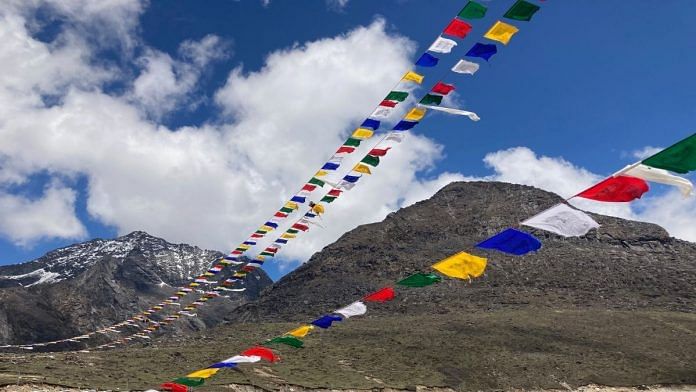First and foremost, a word of appreciation for the labourers, heavy equipment operators, engineers and officers of the Border Roads Organisation undertaking Project Vartak. Despite the frequent landslides and the difficulties of building roads, cutting through the rock and slashing through sub-tropical jungles, they have created paths where by rights there should be none. And the work is only intensifying. A few days after I returned to Delhi, final blasts on the Nepichu tunnel were completed. More tunnels and bypasses are on the way. Sure, the ‘BRO code’ one-liners on the roadside were corny, but one can excuse those.
On the way from Pakke Kesang to Dirang on National Highway 13, the road was blocked by a massive landslide, which you do not expect to be cleared within a couple of hours. But a bulldozer was on its way fairly quickly, and a path was made for our convoy of 25 Mahindra vehicles conducting the Trans Arunachal Drive 2022. And what a drive it was, taking place over three legs that covered the entirety of India’s easternmost state. I only joined the third leg that covered the state’s western region.
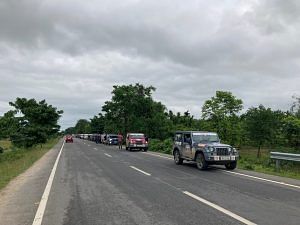
Also read: Travelling to Dubai? Here’s all that you must experience, from a desert safari to ‘dhow’ cruise
Driving through unspoiled beauty
Starting at Pasighat in central Arunachal, on the banks of the Brahmaputra before it enters the plains in Assam and where the locals call the river Siang, we proceeded to Pakke Kesang, then onwards to the towns of Dirang and Tawang, the latter famous for being near a land-border crossing between India and China as well as a major battle site during the 1962 war. After this, we proceeded to travel just a couple of kilometres from the India-Tibet border, to the settlement of Zemithang, where the Dalai Lama first rested in India after evading Mao’s forces in 1959.
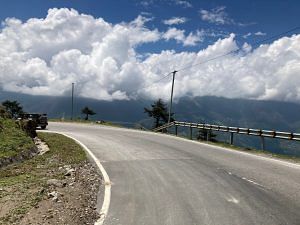
When the temperature in the national capital was on the verge of touching 50 degree Celsius and the air quality indicator a miserable 250 plus, being in places like Sela Pass, where even in the middle of the morning it was just 8 degree Celsius and little need for an AQI indicator, was a blessing like no other. The scenery was at another level — there were shades of Switzerland’s meadow, the exposed rock faces of the Carpathian Mountains surrounded by glacial lakes, the dramatic rapids and waterfalls of the Northern Himalayas and the snow-capped peaks of the Rockies.
Also read: An Indian-Chinese couple went on a road trip to Chengdu — this is what they found
Dilemma of promoting tourism in Arunachal
Yet, more than anything, it was all about the people of Arunachal, as my co-driver, Cindy Khrime, an international snowboard instructor and member of the Monyul tribe of the Tenga Valley, became an ambassador for the people of her state. But having spent her teenage years in Manali, Himachal Pradesh, she is fearful about massive amounts of tourists coming into the state. “I want to see the people here prosper, and tourism is the answer, but at the same time, seeing every scenic spot full of plastic waste is heart-breaking. We must ensure that places like Dirang and Tawang do not become the next Manali or Mussoorie.” It is the sort of shocking images that recently emerged from a campsite on the Char-Dham yatra that Arunachal wants to avoid.
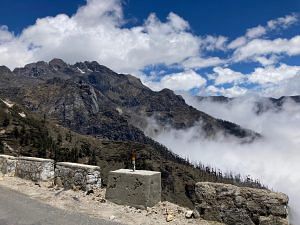
In Tawang, after a quick visit to the War Memorial (one where I learnt about the horrific losses India suffered in late October sixty years ago), the drive concluded, being flagged in by Chief Minister Pema Khandu. He, too, was grappling with the dichotomy of promoting tourism and letting the state retain some of its raw, unfiltered beauty. “Tourism will bring many jobs and can help develop other industries that will employ our youth. I also want more people like you to come to Arunachal and tell the rest of India about our state. With new airports and air services coming, I believe more tourists will come to Arunachal and discover our state. But at the same time, we must encourage environment-friendly tourism and develop proper waste management,” Khandu told me during a cultural programme celebrating the end of the drive.
There are places like Sangetsar Lake, also called ‘Madhuri Lake’ by the Indian Army and the BRO, which are stunning. The views are reminiscent of an Alpine Lake, but in one’s own country. Then there are the Jang Waterfalls, an apparent tourist hotspot, but with almost no tourists and unfettered access to the falls. You could even imagine a Bollywood sequence from the 1990s being picturised there.
And then there was the drive to Zemithang, called ‘Route 66’. The road has acquired this name because of the 66 steep switchbacks that take you from almost 10,000 feet above ground to meadows full of Yaks—a sight that can only be described as a sub-tropical jungle with a fast-flowing rivulet beside a helipad. Here, one can enjoy some local cuisine that includes dishes made with Churpi, a fermented and hard cheese made from Yak’s milk that contains protein and a uniquely bitter flavour. And then there is the local rice wine, which is quite deadly, especially if you, like me, drink it like you’d drink whisky. I did get a good night’s sleep, though.
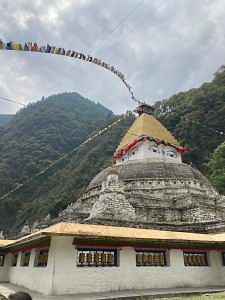
There is a double-edged sword to writing about travelling and driving to Arunachal Pradesh. Yes, the state is still quite raw—if you insist on western toilets and Diet Coke, maybe it isn’t for you just yet. But if you have hiked through the Himalayas and have no problems pulling your pants down and relieving yourself behind a rock, if you don’t mind a diet of pork for breakfast, lunch and dinner, and if you like fresh air like few other places on this planet and can drink actual mineral water from springs, you must visit. However, with the Taj Tawang set to open later this year, travel will become more civilised. And that is not a bad thing, but it will take away something.
@kushanmitra is an automotive journalist based in New Delhi. Views are personal.
(Edited by Zoya Bhatti)


